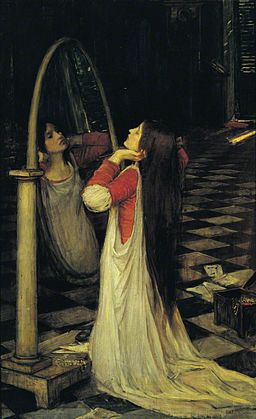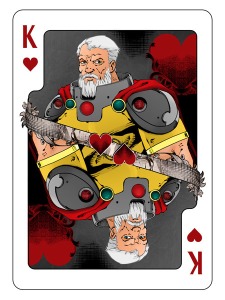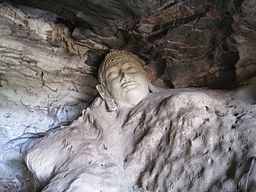We live in two worlds: the real one around us and the one we think about when we are by ourselves. The “inner version” contains past loves, loves unavailable now in the actual world. Within us we can access fantasy and memory, a bygone time of affection and its disappearance. Thus, those lost relationships can “live” inside of us, even if we never see the object of our romantic attachment again. By the end of this essay I hope you and I will share a clear idea of the differences between these two worlds; and a sense of what to do if you are captured by the troubling and stirring inner world of lost love.
I’ll concern myself with two kinds of love and the overlap between them:
- Romantic love you once had and lost: love lost because someone broke your heart.
- Romantic love you tried for but didn’t win: love unfulfilled. This category would include everyday unrequited love, as well as erotic transference toward a therapist.
Where does love begin? With reasons or emotions? Most would say the latter. Language is telling. We are “swept away.” We “fall” in love. We become “love sick.” Note the passivity of these descriptions. Love is not caused by logic or careful analysis. Romance “happens.” Once the love blooms, however, reasons follow and justify our feelings and continuing preoccupation.
The person preoccupied with vanished affection is also occupied by it: occupied in the military sense. An emotional army invades and takes control of our head and heart. These are the soldiers of the cruel King of Hearts, the man who now governs our internal life. The monarch makes sure the idea of the beloved — the image of the beloved, the fragrance and touch and voice of the beloved — cannot be escaped. The heartless King of Hearts insists we review our life of heartbreak. Review and review and review, enacting a repeated agony.
The one we love now has two lives. She is “out there,” living a life on planet earth; and she is “in there,” living an existence unknown to her, experienced only by us. The manufactured being does not think and act identically to the being in the world. We only think so.
We spend time wondering about her. What is she doing now? Who is she with? Does she think about me? What does she think about me?
We are neither voyeurs nor mind readers. Her real identity is a mystery, while her created identity is made up of the language with which we form her life inside of us. The more enchanted our inner life of unreality (and the more distant we are in time from the relationship’s termination), the greater the disparity between this person as she is now (outside of us) and who we imagine her to be. Ironically, the creature we most want to know we unwittingly make unknowable in the act of obsession. “Make,” however, may be too strong a word. Obsession is, perhaps, not a choice, but a thing that just happens to us, like the love by which we were captured.
In either case the lady leads a double-life, one-half of which is a false representation enhanced and enlarged by our emotional and mental process. We trap ourselves by creating a divinity, a goddess requiring worship, with an internal shrine of our own making. Meanwhile, our regular-sized existence is diminished by the outsized, manufactured mirage. How can we then fail to think we would be happier if only we were with this person, this entity who is more magnificent than humanly possible? Better, indeed, than she was when she was with us, in most cases. Did we filter out some unpleasantness from our memory?
We are tortured in the process of obsession, including the endless review of small events. Things said casually, unimportant comments and facial expressions that meant nothing we make into something: something fraught with meaning, something important, full of sharp edges.
We run through imagined scenarios. What if I’d done X? What if I’d not done X? We kick ourselves over actions and omissions that, in reality, probably made no difference. Our preoccupation with this past keeps our love alive.
Our love is placed on life-support. So long as the ritual homage we pay to her continues she will not die as a love object. We exercise the terrifying curse of regret-filled imagination to create a posthumous life for the love we feel and the one we love. Thus, like a person traveling to see a sick relative (someone who remains barely alive), we journey to make internal “hospital visits” and drain our days of the energy and time needed to do anything else.
Once the love is history — when the act of chasing and wooing and trying to impress is over — the memory and fantasy stay behind as a cruel, unchanging mockery. Objects of memory don’t age. The longed-for beloved doesn’t get a cold or brush her teeth. She isn’t inconveniently tired. The target of our obsession can’t lose concentration or temper, fail to laugh at our jokes, acquire friends we don’t like, show-up late, or look washed-out before she puts on her lipstick. She is an ageless dream and daydream.
I would not recommend searching for the reasons we maintain the “romance” of a dead romance, to the extent it is a choice. We are not logical creatures, especially when in love. Perhaps we find sustenance in the possibility, however small, of a realization of the love we hope for. “She still might come around” (one says to oneself), acknowledge the error of her ways, plead for a second go. Perchance the lovely Frankenstein someday will turn gentle and reciprocate our affection.
We wait for the phone call, the email, the tweet opening romance’s door. Perhaps we keep love alive because we think this supersized version of yesterday’s love far surpasses what any real, mortal, new person could offer us today. No satisfaction can be found, unfortunately, either in regret or the hopeless hope of a happy ending.
Might we simply not have enough going on in our lives? Is the daily, dull, dreadfulness we think of as real life relieved by a remembered, glorious preoccupation? The fantasy never fails. The ghost is dependable, always there, ever ready to stir us. Pain, after all, can create its own ecstasy.
And so we travel places where our lost love might still be observed or perhaps even met face-to-face. We seek those people with whom she has contact, friends of hers who might know what she is doing, share something she said about us, advise how to win back what we lost. The truth is, however, that every relationship in our life — business, family, friendship — pales in comparison to “the creature.” We suffer a preoccupied inner life at the additional cost of a diminished outer life, a life in the world of touch and taste, of face-to-face interactions and smiles and bruises and sweet perfume you can smell, not just imagine smelling.
What then? Say you’ve had enough pain and want to wrench yourself from all the tendrils holding you back. You go to a therapist. He will, almost certainly, recognize your need to grieve: encourage an emotional processing of the events revolving carousel-like inside of you. The goal is to end the spinning in your head, get you off the torturous wheel. The grief-work allows you to take the memories a step-further than you have until now: to give up hope; to shed tears with a compassionate human, not in isolation; to become angry with the ghost and finally to bury her. Only those we first reduce to human size can fit into a normal grave.
You might ask, doesn’t this “solution” just keep you in your head? Yes, and for that reason therapy is not yet complete. You still must seize the life outside. Treatment isn’t over until you return to the world of possibility and lived experience. The cure must diminish your use of fantasy and memory going forward. The process of burying your late love affair also requires the exhumation of a different person from another grave — a real person who can live in the world and act on the world.
Who might that be?
You.
Yes, you.
You must make history, not regurgitate it, and thereby escape the long reach of your past and present fantasy. You must tear yourself from the metaphorical hand holding you back.
You can do this.
You must accept the knowledge that some of what is in your brain lives only there; that some of what is in your skull could never and can never come to be. Fantasies are like that, otherwise we would call them by a different name.
In this awful truth is encouragement to get past your preoccupations and move on to your occupation with life, accomplishment, friendship, joy, learning, and growth: that which is still possible within the breathing world. And possible only in the lived experience, only in movement, only when you lift your eyes from the darkness to the sun.
Even, perhaps, to find new love.
—
The top image is called Mariana in the South by John William Waterhouse (ca. 1897). Buddah Head Carved into Living Rock is a photo taken by Photo Dharma in Sadao, Thailand. Finally, Please Touch Gently is the work of Marcus Quigmire. All are sourced from Wikimedia Commons.




